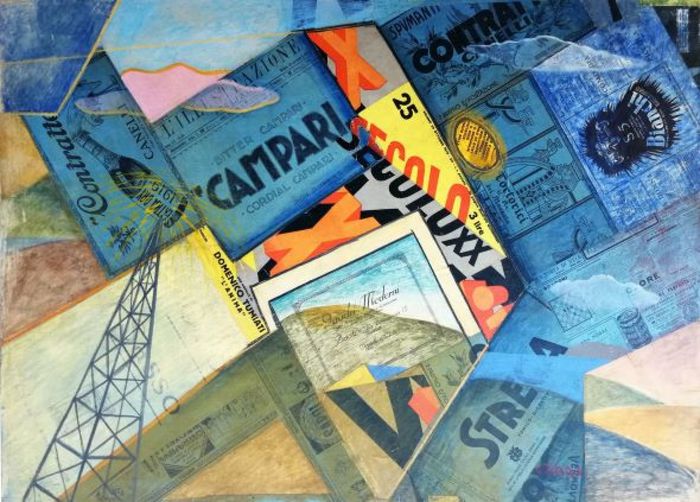MONZA - The cornerstones on which Futurism built its artistic revolution were not only speed, dynamism and the will to erase all links with the past. One of the most effective weapons of the movement founded by Filippo Tommaso Marinetti was the word, a picklock used to undermine an order considered old and outdated on several fronts and thus give vent to creativity that testified to the spirit of the time. The words in freedom on the written page that widen and tighten drawing shapes, curved and twisted lines, therefore, but also the freedom of speech of the provocative performances in theaters that often turned into fights among the public, and the paintings in which the word with no more syntax or punctuation constraints, it becomes the protagonist between the apparent anarchy of typefaces andaim to make it an art form.
The exhibition 'Futurism and Words' is dedicated to the canvases of some champions of the Marinettian avant-garde, which the LeoGalleries space in Monza offers until 29 May. Playing the lion's share among the fifteen works selected by Daniela Porta and Grazia Casiraghi with the advice of Maurizio Scudiero is Fortunato Depero, who was also a precursor of the role that the advertising message through billboards and posters would have assumed in mass social communication . "The street - he said in this regard - will become the only gallery for the Futurists".
One of the works dedicated to the Caffè Irrera in Messina and two very rare parolibere ink tables made in New York in 1930 describing the roller coaster and the "tunnel of love" in the Coney Island amusement park are exhibited by the Rovereto master. 'Still life with Lacerba and Picasso' by Roberto Marcello Baldessari is a 1917 painting on a collage of parts of the magazine spokesperson for the futurists with a reference to the cubism of the great Spanish master, confirming how the artist had, among the first in Italy , 'looked' at Picasso and his papier collé.
The choice of two works by Giulio D'Anna, 'Il merlo', with a cannon-shaped mouth that shoots words, and the 1934 masterpiece 'Communication, advertising and progress', a collage of advertising writings and technologies of Italian companies, is explicit . Precious are also the parolibere tables of 1913 signed by Marinetti, taken from the book 'Le mots et liberté futuristes' and the ink on paper 'Futur Alvino' by Mino Delle Site from 1932. "In all the works proposed, the word becomes image, no longer just to read but to see - explains Maurizio Scudiero, who is also the curator of the Depero archive -. This is the novelty of the futurists. Technically, these are works, especially those by Depero, which anticipate Lettrism, later codified by Isidore Isou in the early 40s,whose founding idea was to renounce words as such and replace them with onomatopoeias ".


/cloudfront-eu-central-1.images.arcpublishing.com/prisa/GLTOQ6XYFVFLZIT7D4BSMKCVU4.jpg)






